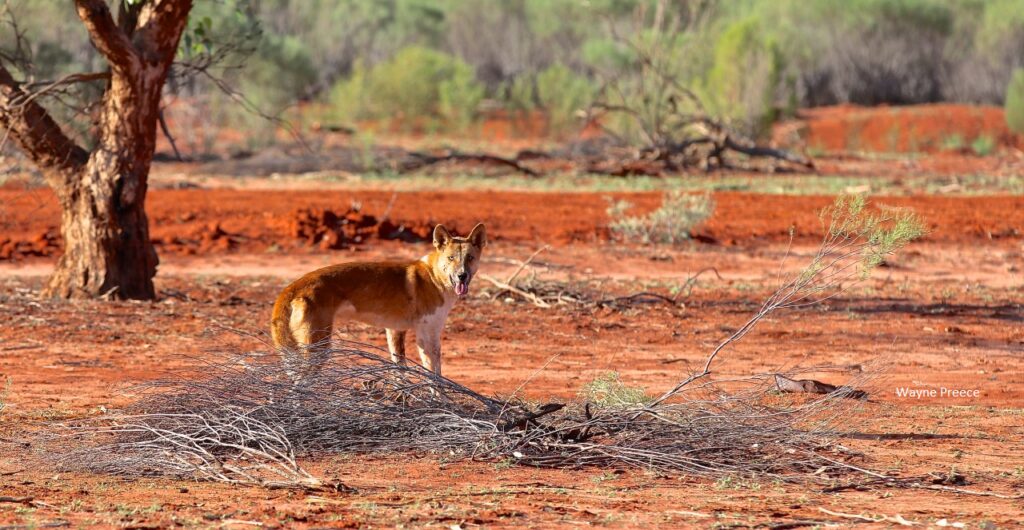21 July 2021
Landholders in the NSW western division now have a great incentive to explore trapping as a management tool for wild dogs thanks to a new promotion through the Professional Wild Dog Controller Program.
Since February 2020, landholders have had the opportunity to engage a professional dog trapper through Western Local Land Services’ PWDC Program.
This program to date has resulted in 102 wild dogs, as well as other pest animals including feral cats, foxes and feral pigs, being removed from the landscape.
Since February this year, landholders have been able to get a Professional Wild Dog Controller onto their property for a day for free in an initiative aiming to increase landholder’s capacity to identify wild dog signs and learn about techniques for control.
The controller also assesses the wild dog problem and discusses control options with the landholders.
The one-day property visits are no charge to landholders and funded under the PWDC program.
Western Local Land Services Regional Pest Animal Coordinator Phil Baird is based in Wentworth and oversees the PWDC Program.
“The free trapper for a day initiative has been a great addition to the PWDC Program and has helped to get landholders who may not have considered trapping or known enough about it to engage with us and participate in the program,” Mr Baird said.
“Many of these landholders either didn’t believe they had wild dogs, or didn’t know enough about sign of wild dog activity.
“The purpose of the free trapper for the day isn’t for them to set traps and report back to the landholder but to educate and increase the capacity of the landholder.
“Landholders spend the day with the PWDC and have the chance to ask any questions they like which our Controllers are only too happy to answer.”
The Western Local Land Services region covers 42 per cent of NSW with wild dogs impacting on landholders at different levels, depending on their location and enterprise.
“We have a lot of carbon farming occurring in the north of our region with absentee landholders as well as cattle producers who don’t have a large financial loss from the presence of dogs,” Mr Baird said.
“If we can open a door for wild dog control with the PWDC Program, those landholders might put out a few baits, join a pest management or Landcare group or engage a paid trapper.
“The gold star would be to have them joining a pest management group. In our recent autumn baiting for wild dogs program we worked with landholders that are members in 22 pest management and Landcare groups which allows for a coordinated approach to wild dog control.”
Since the program started, six PWDC have worked with 37 landholders with an additional 37 properties signed up to participate in the program. In addition to the 102 wild dogs captured to June 2021, 48 feral pigs, eight feral cats and four foxes have been removed from the landscape.
While undertaking their trapping, the PWDC also educate landholders in wild dog control techniques including the identification of sign and movement of wild dogs, wild dog behaviour, identifying tracks and different trapping techniques.
Landholders actively controlling wild dogs as financial members of a pest management group receive a subsidised rate of $25/hour. For non-members, the cost is $50/hour. Western Local Land Services covers all travel costs of the trappers.
The program uses an administrative officer who helps landholders complete a property access and activity agreement form and coordinates a PWDC to contact the landholder to get control works underway.
Mr Baird said the successful program had been modelled on others in Western Australia, South Australia, Hunter Local Land Services and South East Local Land Services.
“We wanted to support the pest group management model – a key part of the program is if you are a member of a pest management group, then you have access to the control program at a 50 per cent subsidy,” he said.
“This idea of a trapper program came out of a meeting with landholders and stakeholders three years ago and they’ve also had input into how it’s been rolled out and administered.
“They felt at the time they needed another tool in addition to baiting, which the PWDC provides.”
Landholders in the Western Local Land Services region wanting to register or find out more about the program can contact Mr Baird on 0417 776 218 or phil.baird@lls.nsw.gov.au.
Funding for the PWDC Program is through the Federal Government’s ‘Communities Combatting Pest Animals and Weed Impacts During Drought’.

Caption: Two programs to incentivise landholders in the NSW western division to manage wild dogs on their properties are kicking goals. Photo credit Wayne Preece
Share